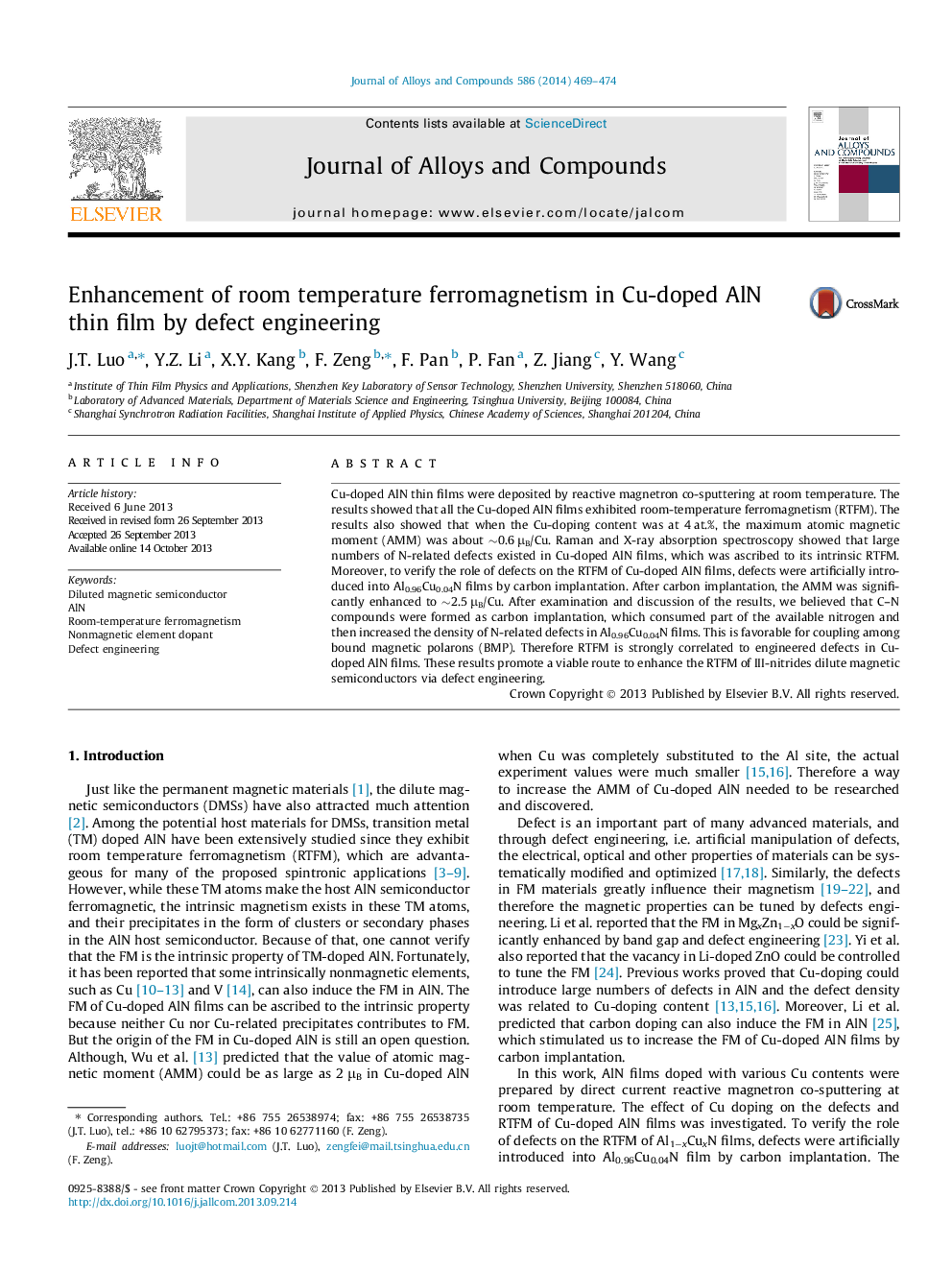| Article ID | Journal | Published Year | Pages | File Type |
|---|---|---|---|---|
| 1612679 | Journal of Alloys and Compounds | 2014 | 6 Pages |
Abstract
Cu-doped AlN thin films were deposited by reactive magnetron co-sputtering at room temperature. The results showed that all the Cu-doped AlN films exhibited room-temperature ferromagnetism (RTFM). The results also showed that when the Cu-doping content was at 4 at.%, the maximum atomic magnetic moment (AMM) was about â¼0.6 μB/Cu. Raman and X-ray absorption spectroscopy showed that large numbers of N-related defects existed in Cu-doped AlN films, which was ascribed to its intrinsic RTFM. Moreover, to verify the role of defects on the RTFM of Cu-doped AlN films, defects were artificially introduced into Al0.96Cu0.04N films by carbon implantation. After carbon implantation, the AMM was significantly enhanced to â¼2.5 μB/Cu. After examination and discussion of the results, we believed that C-N compounds were formed as carbon implantation, which consumed part of the available nitrogen and then increased the density of N-related defects in Al0.96Cu0.04N films. This is favorable for coupling among bound magnetic polarons (BMP). Therefore RTFM is strongly correlated to engineered defects in Cu-doped AlN films. These results promote a viable route to enhance the RTFM of III-nitrides dilute magnetic semiconductors via defect engineering.
Related Topics
Physical Sciences and Engineering
Materials Science
Metals and Alloys
Authors
J.T. Luo, Y.Z. Li, X.Y. Kang, F. Zeng, F. Pan, P. Fan, Z. Jiang, Y. Wang,
